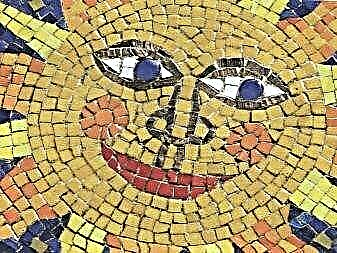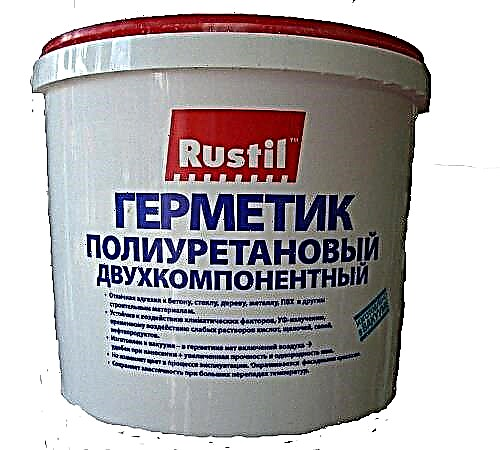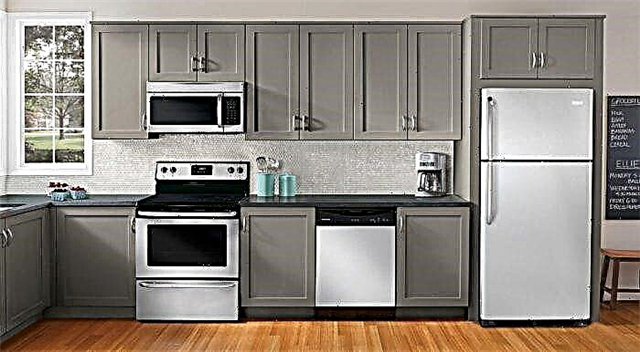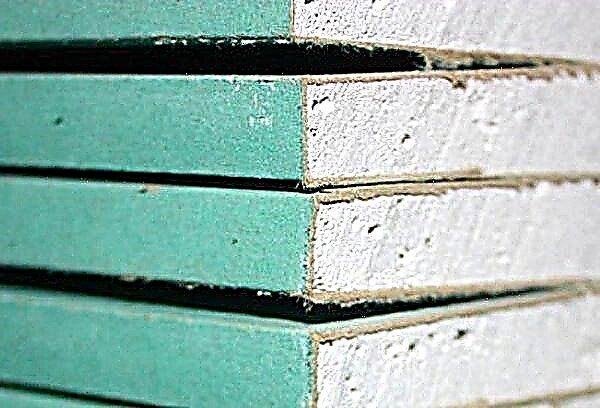
The use of decorative mosaics will help make the design of the room more vibrant and modern. Moroccan mosaic, as well as its aluminum model, is quite popular today.
Features
Mosaic is a very ancient art form that was used in ancient states such as Ancient Egypt, Ancient Greece, Ancient Rome, Persia. The word itself comes from opus musivum - a work dedicated to muses. Mosaic was widely used to decorate a variety of buildings throughout the history of mankind. Mosaic is a type of monumental art, which involves the selection and fixing on the surface of an architectural structure of small elements - stones, smalt, ceramic tiles.
As an art form, it opens up wide possibilities. Due to the small size of the pieces from which the mosaic panel is laid out, it is possible to create images of any nature on it - geometric, floral, subject, multi-figured. Any subject is subject to mosaic: intimate, domestic, pathos, military, national, religious, state.
It is the wide possibilities, external beauty, and resistance to environmental influences that retain the popularity of this art form to this day.




Mosaic was created from those materials whose construction techniques were mastered by builders in one or another period of the history of mankind. These were glass and ceramic pieces. But natural elements were also widely used - stones of various shapes, sea shells, beads, broken porcelain, broken glass and mirrors, metal, granite.
Depending on the task, materials for the mosaic are chosen. This can be a way of diversity of masonry from ceramic tiles, the creation of a picturesque canvas or decorative design details of an architectural structure.
The elements from which the material is made are resistant to environmental influences. They are not exposed to the destructive effects of aggressive environments, fire, water. Therefore, the mosaic is used not only in the design of structures from the inside and outside, but also in the decoration of fireplaces, stoves and garden-park small forms.
Mosaic can be used as an independent art form. In this case, it should be fixed on something. As a form of art, a mosaic can be created from any small material - plastic covers, pieces of colored paper, computer parts, coffee beans and spices, from anything that a real architect wants to create.
Stylish design
Mosaic is an amazingly beautiful kind of fine art created from small multi-colored pieces of stone, glass, and ceramics. It allows you to create a variety of plot works of art directly on the surfaces of the interior of the room. Multi-colored pieces of material shimmer in the sunlight. The fine texture of the mosaic attracts the eye. It is simply impossible to break away from the contemplation of a harmoniously executed mosaic panel.
Mosaic panels can revive any interior. It is not easy is the highlight in the design of the room, and gives the inner space of the architectural structure a halo of fabulousness.
It should not be used on all surfaces of the interior, it needs to take a certain place that matches the plot, color and purpose. Then it will enrich the space with its presence and create an atmosphere of coziness, comfort and beauty.
Mosaics are most often made from materials that are fairly inert, resistant to water and other influences. This is ceramics, glass, stone and others, so it is logical to use mosaic panels in residential and public buildings with a high level of moisture or at the location of a live fire. It can be used for decorating bathrooms, bathrooms, kitchens, fireplace areas in living rooms.
Small pieces from which the mosaic is laid out allow you to create any drawings and plots, from antiquity and classics to modern abstractions.
If you wish, you can order a plot of ancient Greek myths, a battle scene, or a black square made in this technique on the wall. Such a fragment can be placed in any room of a residential building or public building. It can be used both on the entire wall, and on a fragment of the wall, on a piece of construction, on a part. Any surface or object that will be finished with this material will be transformed.


The only negative feature of the mosaic is its high cost, therefore, when decorating the premises, you must also calculate the budget. If financial opportunities allow, you can conceive a panel on the entire wall. It can be bought ready-made or ordered to the master individually. With small financial possibilities, a mosaic can be used to finish part of the wall, for example, it can be a fragment located in a place of high humidity or exposure to fire.
You can arrange a small mosaic on the piece of furniture or as an insert in the wall, tiled. Inexpensive tile mosaics, which are produced complete with tiles, can be used on the floor and walls of the bathroom, kitchen, hallway.
The beauty and attractiveness of the mosaic, as well as the desire of many customers to decorate the premises with it, forced manufacturers to develop different types of mosaic panels and sets. They differ in materials and price. This allows customers to make a choice depending on taste, purpose and financial capabilities.

Mosaic produced several types.
- Glass. It is made of glass, has a variety of shades, and is characterized by light transparency. It can be gold, silver, matte, transparent, plain and with additional decor. A variety of shades is obtained by adding various chemical elements to the glass. The gold and silver version can be obtained by laying in a piece of foil of the corresponding color.
This mosaic is resistant to aggressive environmental influences and is durable, therefore it is used for decorating kitchens and bathrooms, but it can also be used for other rooms, including bedrooms. It can decorate individual pieces of furniture.


- Smalt. This type of mosaic came from antiquity. This is a multi-colored glass, which, unlike glass mosaic, is opaque. It is obtained by adding various chemical elements to the glass mass. Like glass mosaic, smalt has many shades and a shiny surface. It allows you to lay out various patterns and picturesque paintings, is resistant to aggressive environments and can be used where you need to endure the load, for example, on the floor. At the moment, smalt is the most expensive of all varieties.


- Mirror. This mosaic is formed from pieces of a mirror of various shapes. It has the same properties as glass. As a rule, due to the fact that it strongly reflects the environment, it is used to decorate surfaces.


- Ceramic. This type is made of fired clay, has a variety of shades thanks to modern technology. Ceramic elements are opaque, matte or glossy. This diversity allows the wide use of mosaics as a decoration. Ceramic mosaic is very durable and resistant to water, therefore it is often used in damp rooms. One of its varieties is durable porcelain stoneware.


- Stone. This option is made of natural stone after it is cut into small pieces and processed. Like any stone, such a mosaic is very durable, but does not tolerate the effects of aggressive environments and can be destroyed by acids and other chemical compounds. This mosaic is used to decorate stairs, pools, decorate entrances and fragments of the facade of the building.
- Metal. It is called the innovation of modernity, since it is represented by squares of metal, of which they form a single canvas. It serves to decorate surfaces due to a certain type of metal.


- Mother of Pearl. This type is created from natural shells that are specially grown. After thorough processing, the shells are cut into individual elements, from which the mosaic is laid out. The canvas from shells shimmers with delicate shades. It requires a careful attitude and attention to oneself during the operation.
- Wooden. This mosaic is made from different types of wood. Since a natural tree turns sour from water and swells, is subject to burning and aggressive environments, this option is used only in residential dry rooms of the house for walls and floors.


- Coconut. This option is made from coconut skins. It has a slightly convex surface. Coconut mosaic does not burn, it is well washed, has excellent soundproofing properties and retains heat.

See how to choose a mosaic in the next video.
Glass mosaic
The most popular mosaic material in the interior is glass and smalt, its opaque version. A sheet of smalt is split into small pieces, and then polished in accordance with the pattern. Glass mosaic looks fresh and colorful, it is picturesque, resistant to temperature and moisture, as well as affordable prices. Glass mosaic is suitable for bathroom lining, interior decoration of pool baths and jacuzzi.
Glass mosaics in the interior are not afraid of temperature differences, so they can be used in decorating kitchen aprons, fireplaces, chimneys and stoves, and can also be used externally for decorating facades and laying decorative floors on terraces and patios. A large color palette is achieved by the addition of dyes during production (cadmium, selenium, mother of pearl, aventurine).
Stone mosaic
Mosaics and panels made of natural stone are most often made of marble, onyx, lapis lazuli, travertine and granite. In skillful hands, the stone can be given the effect of aging, sanded, polished, given an interesting shape. Most often, pieces (tesseras) are cut out from plates with a thickness of 8-10 mm.
The decor is particularly durable and almost not susceptible to aging. Unlike glass mosaics, stone tiles have a non-slip surface, so we recommend choosing a stone when decorating steps, terraces and patios.
Ceramic mosaic
Widely represented by a wealth of shades and patterns, it can repeat various natural textures, for example, wood, while possessing the necessary moisture resistance. Mosaic can be supplemented with various effects - craquelure, stains, interspersed with other shades.
Ceramic mosaics are resistant to sunlight and chemicals. Ceramic mosaics are made from a mixture of quartz sand, clay and other additives, so the wear resistance and durability can vary depending on the composition. Pay attention to the manufacturer’s recommendations for the use of ceramic tiles for decoration, as hardness and water absorption may differ for different tiles.
Wood mosaic
Due to the great ability to swell and dry, the wooden mosaic in the interior is used in the decoration of residential premises. The natural texture gives the interior coziness and creates interesting accents, for example, highlighting one of the walls of the room with mosaics. Wooden mosaic can be used to finish the apron of the kitchen and countertops, but it is necessary to cover the wood with high-quality varnish.



